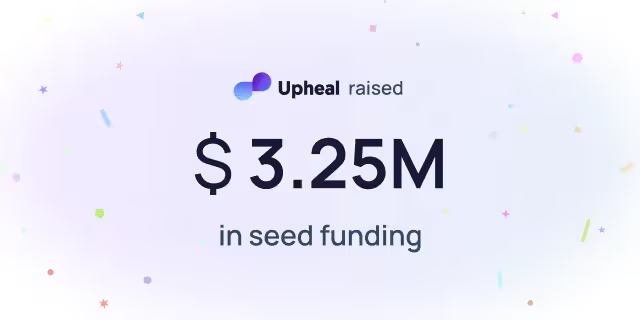8 tips for better therapy progress notes – by an ex-therapist

Writing good progress notes is essential. As a mental health provider, it’s an essential piece of documentation that outlines your client’s progress and the treatment you provide. A progress note should be written for every single session you conduct.
As a therapist, I struggled with progress notes at first. Writing notes can be a time-consuming and challenging task. But, thanks to a great mentor, I learned several strategies that helped me write great notes.
I’m going to pass those tips and tricks down to you!
Why are progress notes so important?
Your progress notes need to be detailed and contain the right information. They are used to justify billing for insurance purposes, clarify the purpose of sessions, and document your client’s progress and current mental state.
Do I have to worry about progress notes if I don’t take insurance?
While progress notes are essential to get reimbursed by insurance, they are necessary if you see clients under a self-pay model, as well. They are useful for situations where a client transfers to another provider or has a legal proceeding.
How to write better progress notes
Writing good progress notes can be simple if you have the right information. Here are some tips.
#1 Don’t put it off
I loved being a therapist but struggled immensely with keeping up with notes. Writing notes can be time-consuming. And, there simply wasn’t much time at the end of the day to get them done. However, putting off notes means that you are likely forgetting key pieces of important information that should be in the note. This can lead to notes that are inaccurate or incomplete. For this reason, it’s best to do notes within 24 hours of your session, or 48 hours at the latest. Fortunately, tools like Upheal can make it so much easier to get notes done in no time since they can capture a session for you. They can do so during the course of a therapy session or even after, from your dictated observations or a few written notes.
#2 Avoid abbreviations
I used to use abbreviations in my notes to speed up the process of writing them until I received a phone call from a confused healthcare practitioner trying to coordinate care for a mutual client. She had no idea what an abbreviation that I had used meant.
If the abbreviations you use aren’t standard medical ones that are well-known, this could cause problems at a later point should another healthcare provider need to read the notes for continuity of care. For this reason, I would recommend avoiding them altogether if possible.
#3 Embrace artificial intelligence (AI)
At the time that I practiced, AI tools for psychotherapy use did not exist. So, I haven’t had the pleasure of using them in practice, but I wish that tools like Upheal would have been available to me as a clinician. Not spending hours writing notes would have been a gamer-changer.
Upheal is a game-changer when it comes to simplifying the process of writing good progress notes. Upheal’s artificial intelligence makes the process of doing notes 90 percent faster compared to doing it by hand. I believe that this can help reduce the burnout that so many clinicians face, by saving about 6 extra hours for you per week.
#4 Make sure every note contains the right information
There are some key pieces of information that a therapy progress note should have. For an in-depth analysis, have a read here. The basics that I included in every note are:
- Demographic information
- Session details
- Diagnosis
- Presenting symptoms
- Clinical observations
- Progress towards goals
- Risk assessment
- Plan
Here is a fictional example of a progress note:
#5 Only include relevant details
Many new therapists try to include every detail in their progress notes. I know I used to do this. But, my mentor explained that progress notes should be concise and focused. Not everything that you talk about in the session needs to be included. Only include the information outlined above. Leave out minor details that are not related to your client’s progress, goals, or mental state.
If you want to document other information, it should be included in your psychotherapy notes. These are different from progress notes and you can read about those differences in this article. Psychotherapy notes are not entered into the client’s chart or shared with other providers or payors. These are private notes that are kept to help remind you of important details from the session.
#6 Maintain objectivity
Avoid stating your personal feelings or opinions in your progress note. Stick to objective observations and professional assessments in your notes. Include facts and use clear reasoning to support any observations.
#7 Use audio, even in-person
Some therapists take notes during sessions (concurrent documentation), and in fact, some organizations encourage it. While this can save time and produce more accurate notes, it can also detract from the session. To build trust, it’s important to maintain eye contact and give your client your full attention during sessions. This is hard to do if you are focused on taking notes.
Instead, with your client's knowledge and permission, you could record the session audio and produce notes later (and if you’re wondering: Upheal deletes the audio recording by default after the notes are created). This is also how Upheal can be used in-person to invisibly capture session content for creating progress notes.
#8 Use a template
A template makes it so much easier to ensure you have all the right information in your notes. There are several different note templates that you can use to make writing notes more efficient. The note types are similar and all contain the information outlined above, but they have different formats.
SOAP (Subjective, Objective, Assessment, Plan)
SOAP notes are widely used by therapists to document progress. They include four sections:
- Subjective: how the client feels
- Objective: the therapist’s observations
- Assessment: the therapist’s clinical assessment as it corresponds to the DSM-5 and the
- Plan: the plan to treat the client
DAP (Description, Assessment, Plan)
DAP notes are also very popular psychotherapy notes. This is the note template that I used. DAP notes are very similar to SOAP notes, but they combine two sections (subjective and objective) into one section: data. Here are the main sections of a DAP note:
- Data: the reason for the visit, client presentation, and interventions
- Assessment: therapist’s clinical assessment
- Plan: plan for continued treatment, date of next session
BIRP (Behavior, Intervention, Response, Plan)
BIRP notes focus on the client’s behavior during the session, as well as their response to your interventions. It also outlines the plan. Here are the main sections:
- Behavior: includes information about the client’s behavior during the session as well as their appearance.
- Intervention: this section includes what interventions you used or suggested during the session. It can include coping strategies and other interventions.
- Response: In this section, you outline the client’s response to the interventions. Also, outline any barriers that the client has when it comes to implementing the interventions.
- Plan: document the plan for future sessions, as well as the date of the next session.
GIRP (Goals, Intervention, Response, Plan)
GIRP notes are different from the rest in that they include a goal section. With these types of notes, you start with the client's goals and what they want to work on during the session. Then, you record your intervention, the client’s response, and the plan for future sessions.
GIRP notes have an advantage over the other types in that they allow you to more clearly track progress.
So, which template is best? The answer is that it just depends on your individual preferences. All of these templates enable you to create thorough documentation.
Final thoughts
If you struggle with writing notes, you’re not alone. Most of us in the mental health field have definitely been there. But, writing good progress notes doesn’t have to consume hours of your time or be something that you continually put off. Save time and take better progress notes with Upheal. You can use Upheal to quickly write progress notes in a variety of templates, including DAP, SOAP, and more. This allows you to be more present during sessions and have more time at the end of the day to dedicate to your own self-care.












